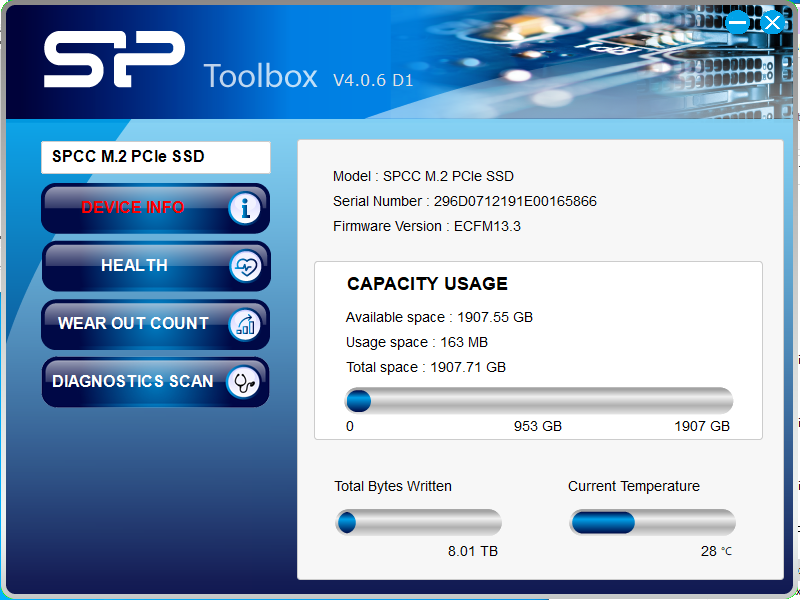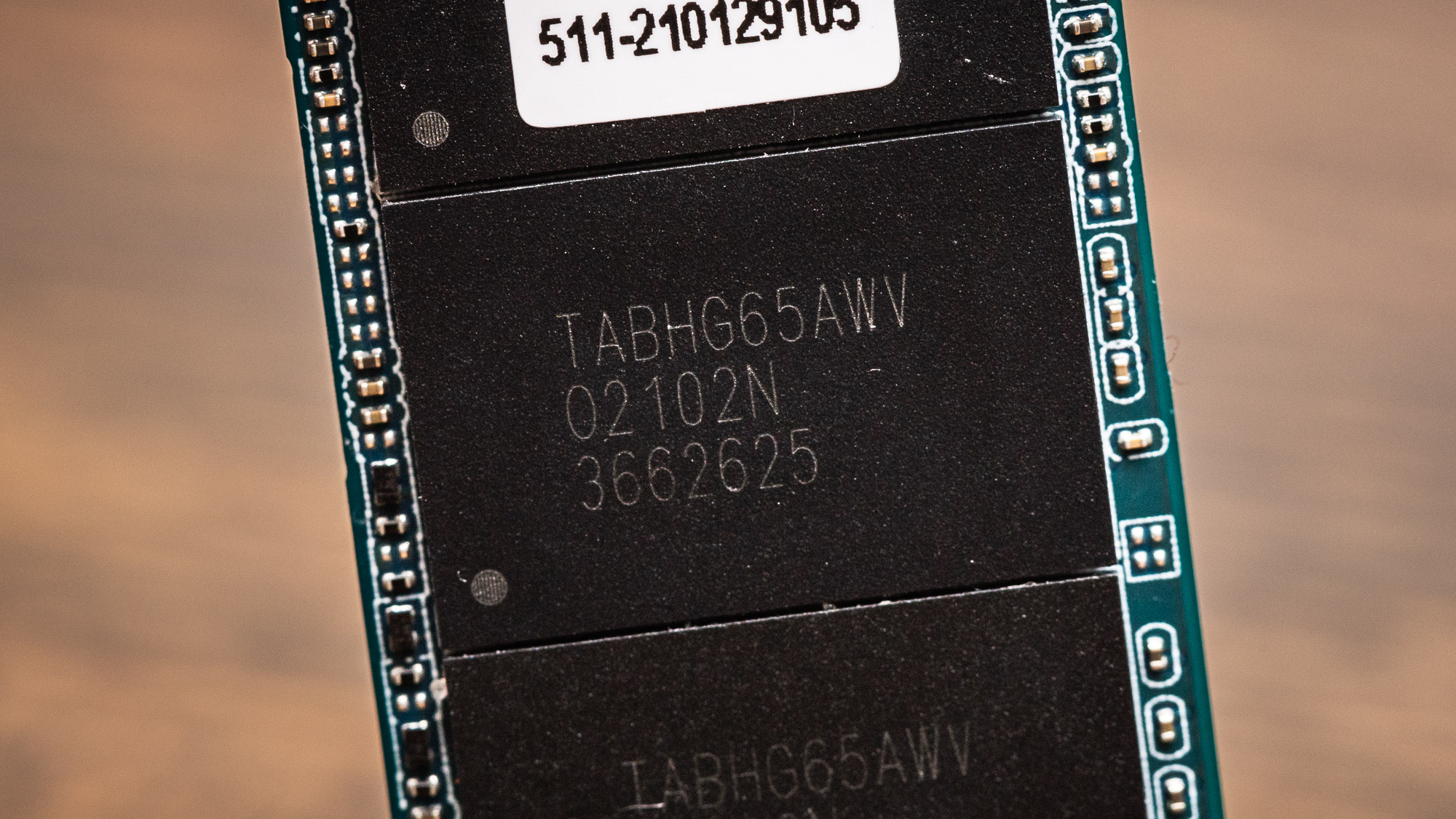Tom's Hardware Verdict
Silicon Power’s XD80 is a solid-performing mainstream PCIe 3.0 M.2 NVMe SSD that comes with Samsung-beating endurance ratings and a heatsink, all at a low price.
Pros
- +
+ Heatsink
- +
+ Low-cost
- +
+ Strong sustained write speeds
- +
+ SLC cache recovers quickly
- +
+ 5-year warranty and Samsung beating endurance
Cons
- -
Small SLC cache
Why you can trust Tom's Hardware
The Silicon Power’s XD80 comes armed with a Phison E12S SSD controller, BICS4 TLC, and a heatsink. This combo delivers solid, cool performance at an affordable price point, making the PCIe 3.0 x4 drive a good value for those looking to save a few bucks over premium drives.
The XD80 competes against other mainstream SSDs like the Crucial P5, WD_Black SN750, and Samsung’s 970 EVO Plus. In addition, the drive features a unique design for a Phison-based SSD — it's one of only a few slim PS5012-E12S-based designs with TLC flash that still retains a single-sided M.2 form factor, even for the 2TB model.
The XD80 also features a pre-installed thin aluminum heatsink that hardly adds to the XD80’s thickness, perhaps even making it suitable for some laptops. Based on our testing, the XD80 equipped with a heatsink fit into a relatively recent Dell ultrabook in our testing without clearance issues, which is an important consideration if you’re looking for a laptop drive.
Specifications
| Product | 256GB | 500GB | 1TB | 2TB |
|---|---|---|---|---|
| Pricing | $45.99 | $64.99 | $109.99 | $219.99 |
| Capacity (User / Raw) | 256GB / 256GB | 512GB / 512GB | 1024GB / 1024GB | 2048GB / 2048GB |
| Form Factor | M.2 2280 | M.2 2280 | M.2 2280 | M.2 2280 |
| Interface / Protocol | PCIe 3.0 x4 / NVMe 1.3 | PCIe 3.0 x4 / NVMe 1.3 | PCIe 3.0 x4 / NVMe 1.3 | PCIe 3.0 x4 / NVMe 1.3 |
| Controller | Phison PS5012-E12S | Phison PS5012-E12S | Phison PS5012-E12S | Phison PS5012-E12S |
| DRAM | DDR3L | DDR3L | DDR3L | DDR3L |
| Memory | BiCS4 96L TLC | BiCS4 96L TLC | BiCS4 96L TLC | BiCS4 96L TLC |
| Sequential Read | 3,100 MBps | 3,400 MBps | 3,400 MBps | 3,400 MBps |
| Sequential Write | 1,100 MBps | 2,300 MBps | 3,000 MBps | 3,000 MBps |
| Random Read | 180,000 IOPS | 290,000 IOPS | 390,000 IOPS | 500,000 IOPS |
| Random Write | 240,000 IOPS | 510,000 IOPS | 450,000 IOPS | 600,000 IOPS |
| Security | N/A | N/A | N/A | N/A |
| Endurance (TBW) | 200 TB | 400 TB | 800 TB | 1,600 TB |
| Part Number | SP256GBP34XD8005 | SP512GBP34XD8005 | SP001TBP34XD8005 | SP002TBP34XD8005 |
| Warranty | 5-Years | 5-Years | 5-Years | 5-Years |
The Silicon Power XD80 is available in capacities of 256, 512GB, 1TB, and 2TB, each priced aggressively low at roughly $0.11 to $0.13-per-GB. The company rates the XD80 for up to 3.4/3.0 GBps of sequential read/write throughput and upwards of 500,000/600,000 random read/write IOPS over its PCIe 3.0 x4 interface. It has a 52GB SLC cache, though, so real-world sustained write performance will be slower than the spec if you write more than 52GB as one operation. We’ll show what that looks like on the following page.
The XD80 comes backed by high endurance ratings within its five-year warranty and should be suitable for heavy content creation. The 2TB model can endure 1,600 TB of written data within its warranty period (400TB higher than the Samsung 980 Pro). Moreover, it serves up this impressive endurance with less factory overprovisioning than competing drives, at roughly 7.4% vs 10%, giving you a bit more usable storage capacity than other SSDs.
Software and Accessories
Silicon Power provides a very basic SSD Toolbox. With it, you can monitor the capacity used, the total bytes written to the drive, and temperature as reported by the SSD’s S.M.A.R.T. data. It also has a built-in diagnostic scanner.
A Closer Look
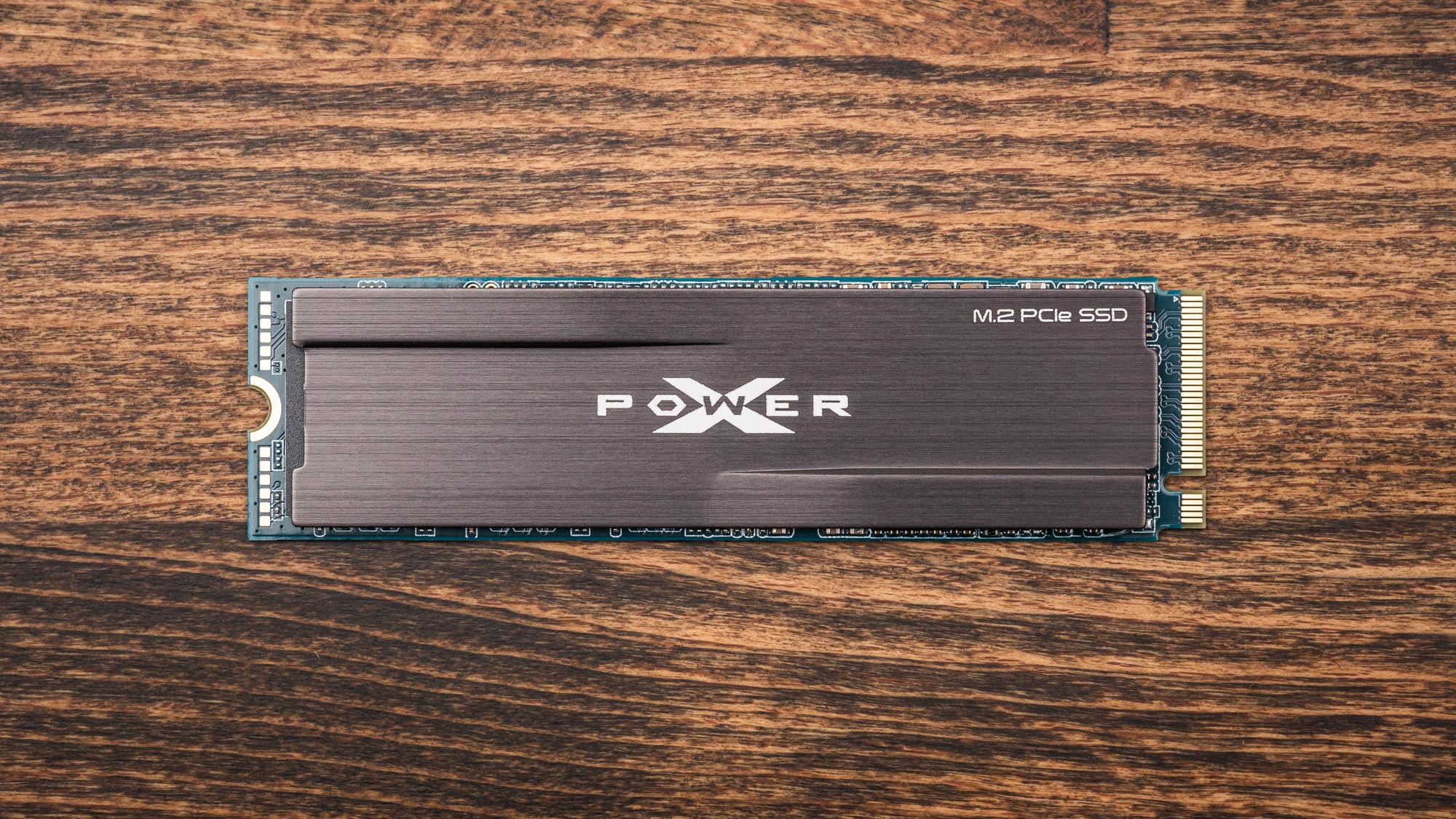
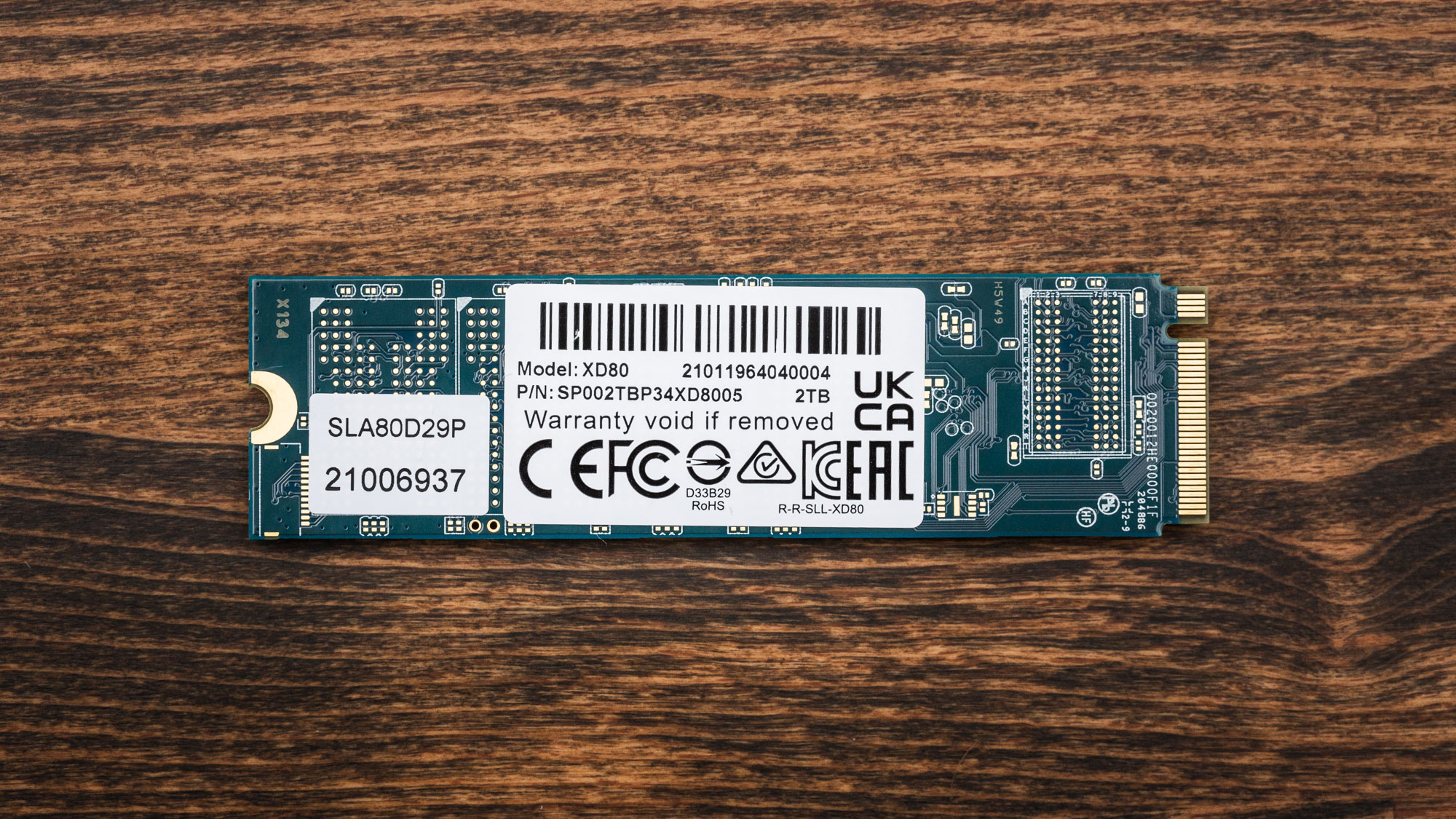
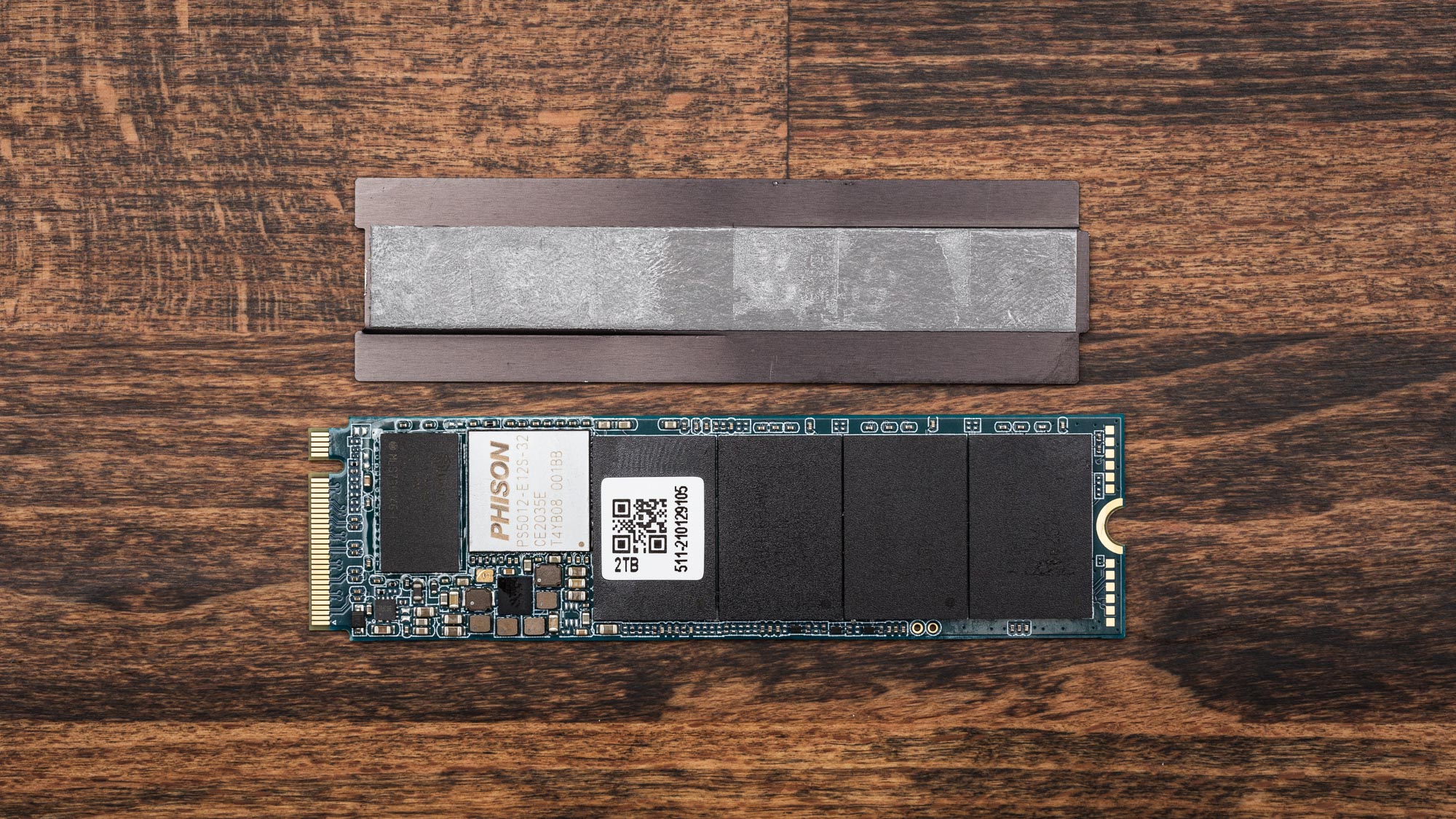
As mentioned, the XD80 comes in an M.2 2280 single-sided form factor – even at the 2TB capacity. It features a grey-colored, pre-applied aluminum heatsink. Silicon Power claims the heatsink reduces temperatures by up to 20%. The XD80 also supports low-power ASPM and ASPT for cooler, more efficient operation.
Get Tom's Hardware's best news and in-depth reviews, straight to your inbox.

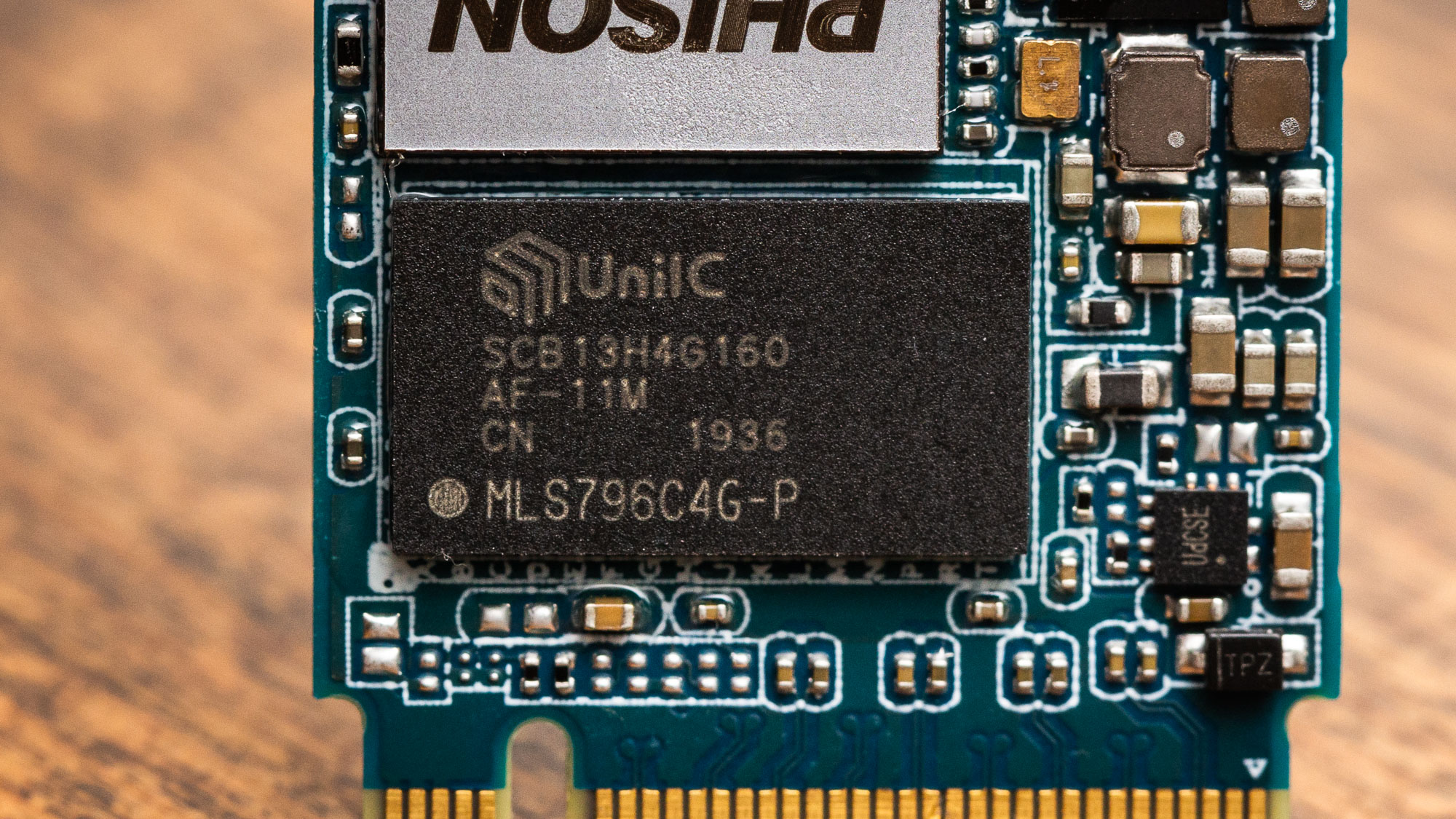
Phison’s PS5012-E12S PCIe 3.0 x4 NVMe SSD controller is a quad-core, NVMe 1.3-compliant design that leverages two Arm Cortex R5 CPUs clocked at 666 MHz alongside lower-clocked dual co-processors. Phison’s third-generation Low-Density Parity-Check (LDPC) ECC, a RAID engine, and end-to-end data path protection ensures reliability and consistency. The drive supports S.M.A.R.T. data reporting and Trim, but it doesn’t support AES 256-bit hardware encryption.
The controller has DRAM for buffering the FTL mapping tables, interfacing with 4Gb of DDR3L from Xi'an UniIC Semiconductors for the task. The controller also interfaces with Kioxia’s BiCS4 96L TLC flash. Our 2TB XD80 packs thirty-two 512Gb dies that are spread among four NAND packages. This flash operates at 533 MTps and has a dual-plane design.
MORE: Best SSDs
MORE: How We Test HDDs And SSDs
MORE: All SSD Content
- 1
- 2
Current page: Features and Specifications
Next Page Silicon Power 2TB Performance Results and Conclusion
Sean is a Contributing Editor at Tom’s Hardware US, covering storage hardware.
